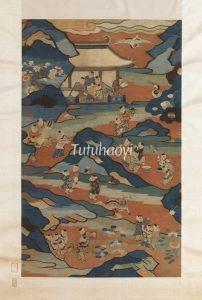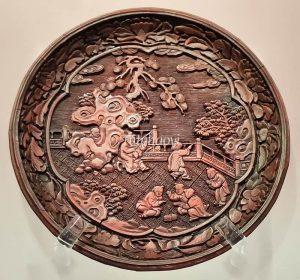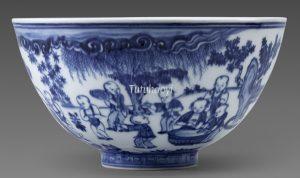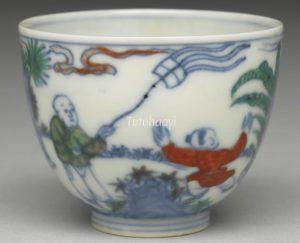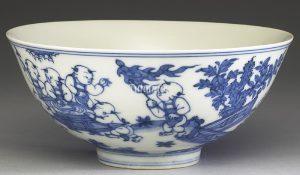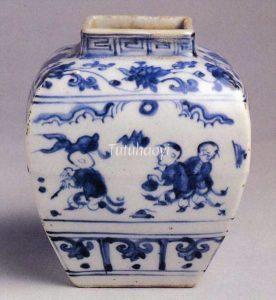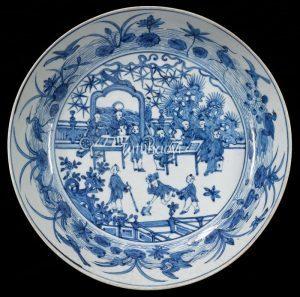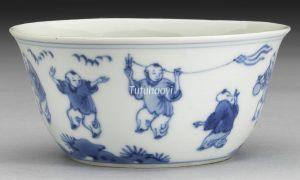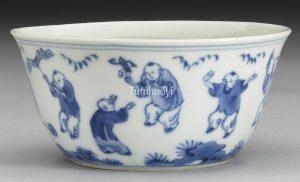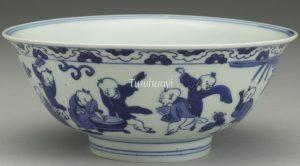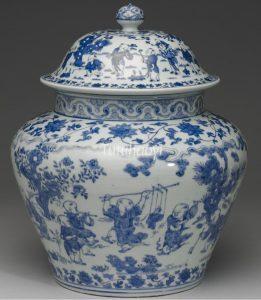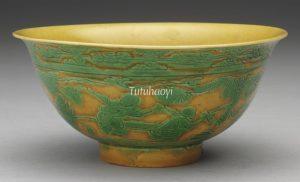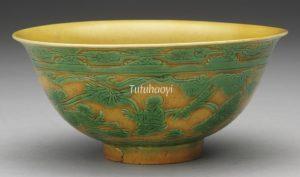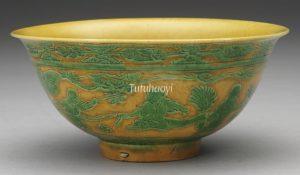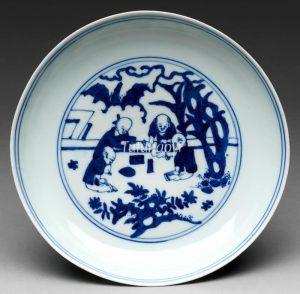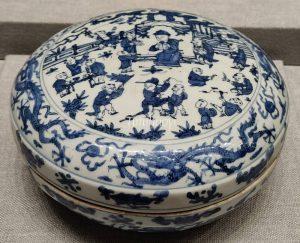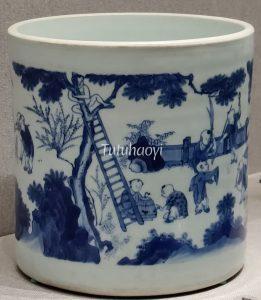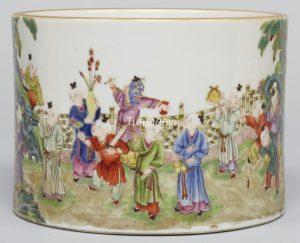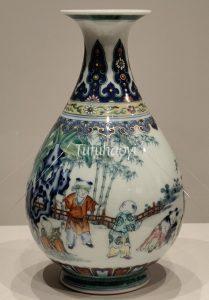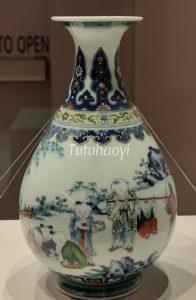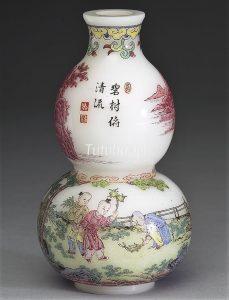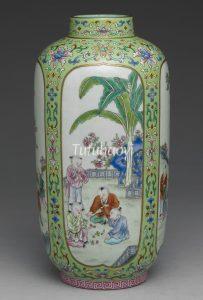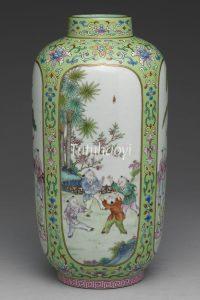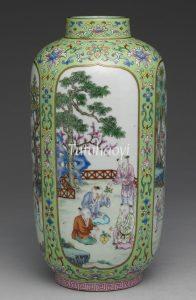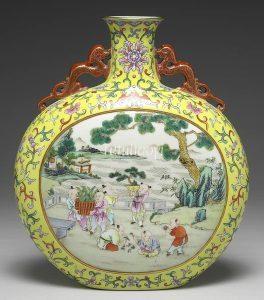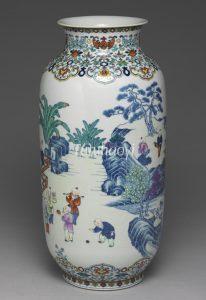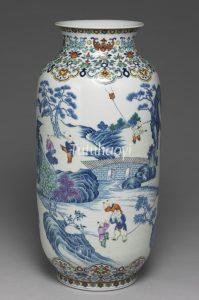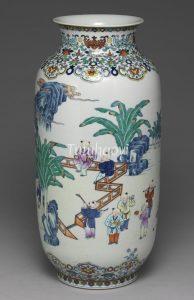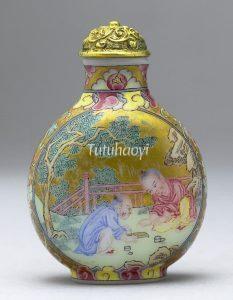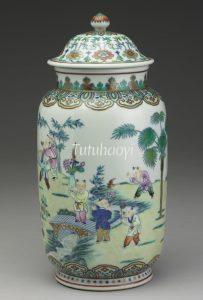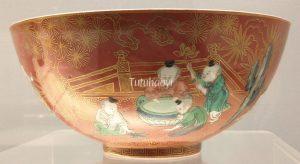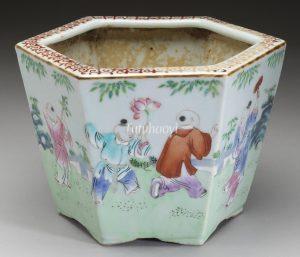Children at Play
婴戏图
© Tutuhaoyi.com owns the copyright of the description content for the images attached. Quoting all or part of the description content on this page is permitted ONLY IF ‘Tutuhaoyi.com’ is clearly acknowledged anywhere your quote is produced unless stated otherwise. (本页描述内容版权归Tutuhaoyi.com所有,转发或引用需注明 “Tutuhaoyi.com”, 侵权必究, 已注开源信息的条目除外。)
Children at Play is a classical motif in traditional Chinese art, portraying lively scenes of children engaged in games and daily amusements. These depictions often feature children flying kites, kicking balls, turning somersaults, enjoying lanterns, performing lion or dragon dances, tending flowers, playing with birds and animals, or mimicking adult roles such as scholars, officials, or ceremonial attendants.
This motif can be traced back to the Warring States period and gained prominence during the Song dynasty. It reached a refined artistic height under painters like Su Hanchen—his celebrated work Children Playing in an Autumn Garden exemplifies the genre. During the Ming and Qing dynasties, the theme flourished in decorative arts such as porcelain, lacquerware, and embroidery, especially for festive occasions like weddings, birthdays, and Lunar New Year celebrations.
Beyond its charming portrayal of childhood, this motif also conveys auspicious meanings. One of the most iconic is the Hundred Children composition, symbolising Confucian ideals of a flourishing lineage and family prosperity. Many works also incorporate puns and visual metaphors, conveying blessings such as May you have continuous noble offspring (连生贵子), May you get promotion step by step (步步高升), and May everything goes as you planned (必定如意). These pun-based images will be explored further in dedicated entries on Tutuhaoyi.
summarised by Rachel Ma
Related Motifs & Symbols:
Fig 1: Children at Play During the Festival of the First Full Moon 上元婴戏图轴, kesi silk fabric hanging scroll, Anonymous, Song dynasty (960–1279), courtesy of the National Palace Museum, Taipei
Fig 2: red carved lacquer dish made by Zhang Cheng, Yuan dynasty (1271–1368), courtesy of Zhejiang Provincial Museum, China; Photograph by Rachel Ma
Fig 3: porcelain bowl with underglaze blue decoration, Zhengtong – Tianshun period (1436–1464), Ming dynasty, courtesy of the Shanghai Museum, China
Fig 4: doucai porcelain cup with underglaze blue and overglaze enamelled decoration, Chenghua period (1465–87), Ming dynasty, courtesy of the National Palace Museum, Taipei
Fig 5: porcelain bowl with underglaze blue decoration, Chenghua period (1465–87), Ming dynasty, courtesy of the National Palace Museum, Taipei
Fig 6: square porcelain jar with underglaze blue decoration, Zhengde period (1506–21), Ming dynasty, courtesy of the Metropolitan Museum of Art, New York
Fig 7: porcelain dish with underglaze blue decoration, 15th century, courtesy of Minneapolis Institute of Art, Minnesota
Fig 8-9: porcelain cup with underglaze blue decoration, Jiajing period (1522–66), Ming dynasty, courtesy of the National Palace Museum, Taipei
Fig 10: porcelain bowl with underglaze blue decoration, Jiajing period (1522–66), Ming dynasty, courtesy of the National Palace Museum, Taipei
Fig 11: lidded porcelain jar with underglaze blue decoration, Jiajing period (1522–1566), Ming dynasty, courtesy of the National Palace Museum, Taipei
Fig 12: lidded porcelain jar with underglaze blue decoration, Jiajing period (1522–1566), Ming dynasty, courtesy of The Trustees of the British Museum
Fig 13-15: porcelain bowl in green glaze on a yellow ground, Jiajing period (1522–66), Ming dynasty, courtesy of the National Palace Museum, Taipei
Fig 16: porcelain dish with underglaze blue decoration, Jiajing period (1522–66), Ming dynasty, courtesy of the Metropolitan Museum of Art, New York
Fig 17: round porcelain container with underglaze blue decoration, Wanli period (1573–1620), Ming dynasty, courtesy of the Palace Museum, Beijing; Photograph by Rachel Ma
Fig 18: porcelain brush holder with underglaze blue decoration, Chongzhen period (1628–44), Ming dynasty, courtesy of the Palace Museum, Beijing; Photograph by Rachel Ma
Fig 19: famille rose brush pot, Yongzheng period (1723–35), Qing dynasty, courtesy of Tokyo National Museum, Japan
Fig 20-21: doucai gilded porcelain bottle, Qianlong period (1736–95), Qing dynasty, courtesy of the Palace Museum, Beijing; Photograph by Rachel Ma
Fig 22: glass gourd-shaped bottle with enamelled decoration, Qianlong period (1736–95), Qing dynasty, courtesy of the National Palace Museum, Taipei
Fig 23-25: famille rose lantern-shaped vase, Qianlong period (1736–95), Qing dynasty, courtesy of the National Palace Museum, Taipei
Fig 26: famille rose porcelain vase, Qianlong period (1736–95), Qing dynasty, courtesy of Liaoning Provincial Museum, China; Photograph by Rachel Ma
Fig 27: famille rose porcelain flask, Qianlong period (1736–95), Qing dynasty, courtesy of the National Palace Museum, Taipei
Fig 28-30: famille rose lantern-shaped vase, Qianlong period (1736–95), Qing dynasty, courtesy of the National Palace Museum, Taipei
Fig 31: glass snuff-bottle with enamelled decoration, Qianlong period (1736–95), Qing dynasty, courtesy of the National Palace Museum, Taipei
Fig 32: lidded jar in wucai painted enamels, Qianlong period (1736–95), Qing dynasty, courtesy of the National Palace Museum, Taipei
Fig 33: gilded porcelain bowl with wucai decoration on a coral-red ground, Jiaqing period (1796–1820), Qing dynasty, courtesy of the Shanghai Museum, China; Photograph by Rachel Ma
Fig 34: famille rose hexagonal planter, 19th century, courtesy of the National Palace Museum, Taipei
